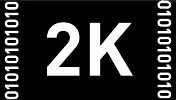

I wandered into Ida unexpectedly. I was at the cinema to see a different movie that day, but when I saw that this film was starting at the same time and playing on one of the largest screens in my city, I switched theaters. I'm glad I made the swap that day because the greatest pleasures of this film are visual. Director Pawel Pawlikowski (Last Resort, My Summer of Love) makes cerebral pictures from which I usually expect intimate, understated, naturalistic performances rather than striking, stylized imagery. But this film (his first made in his native Poland) marks a clearly intentional shift in approach. The story of a young novice nun who grew up in a Polish convent, unaware that her parents were Jews murdered during WW II, takes place in the 1960s and is shot in the stark black and white, 1:37.1 aspect ratio that most Polish films of that time were made. Pawlikowski uses this square frame and grey pallet to capture Soviet-era Poland's cold, austere atmosphere. Each of his beautiful compositions stands on its own like an evocative still photograph. The human subjects are often relegated to the lower half or even bottom corners of the images, with the tops of these frames filled with grey skies, blank walls, and unadorned ceilings. These individual shots become so fascinating that they begin to tell stories on their own, the way great still photography can. Many of the movie's incidents and plot points happen abruptly or off-screen, which snapped me out of the dreamlike quality induced by the expressive images and forced me to catch back up with the quietly unfolding story. I found this style a curious yet effective way to tell this simple, personal story with its emotionally complex themes of national and ethnic history.
Pawel Pawlikowski uses a square frame and grey pallet to capture Soviet-era Poland's cold, austere atmosphere in this striking tale of a young Polish novice nun learning that her parents were Jews murdered during WW II.




